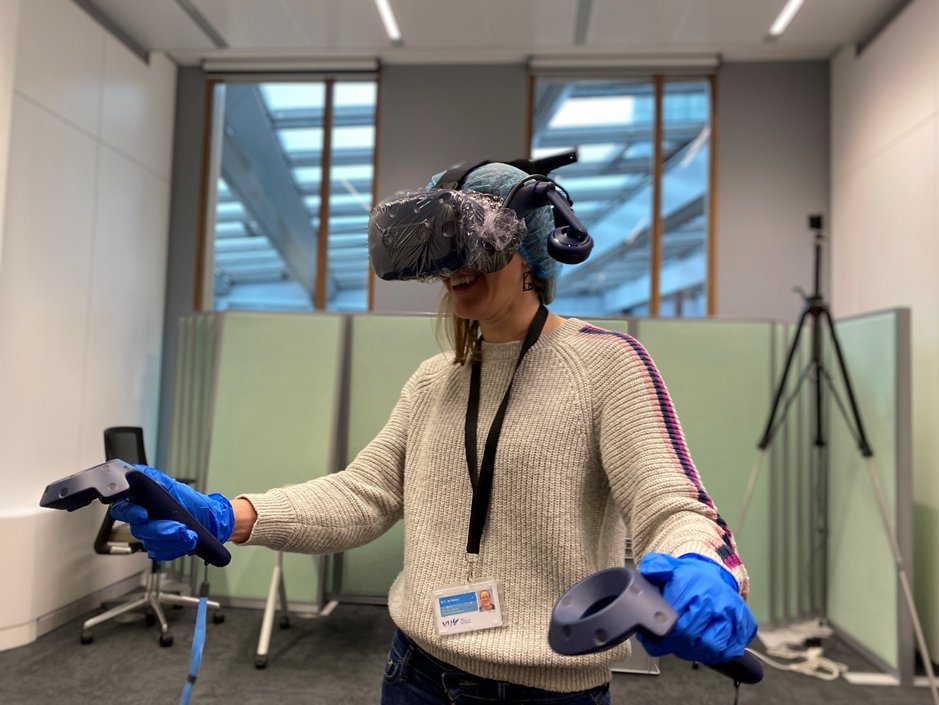
🚨Paper out in Judgment and Decision Making journal: After the virtual flood! My latest #VirtualReality #EconTwitter experiment on #riskcommunication and the last one to be published from my thesis #PhDone sjdm.org/journal/20/200… summary🧵with GIFs and pictures👇 



MOTIVATION: people who experienced a disaster invest more in prevention (#DRR). But we don’t want to break dikes 😬What also helps are coping values: feeling of being able to install measures and the belief that they help. Idea: #VR experience to show risk and measures 2/9 



METHOD: 108 people showed up for the VR experience + investment game + survey in the Amsterdam @networkinstvu lab. At the same time a control group of 276 Amsterdammers did the investment game + survey online. 4 weeks later VR group online follow-up (78 completed) 3/9 



VR: participants had to move around in the lab to protect their house from flooding with sandbags @VU_Science See full video here: vimeo.com/482506190 4/9
After stacking the sandbags (a) they could check out the interior being protected from flooding (b) and finally they could explore the flooded house of the neighbors (c) – the counterfactual. Hypotheses and main analyses preregistered on OSF: osf.io/5snem/ 5/9 

MAIN RESULT: participants who experienced VR flood invested significantly more in the flood risk investment game than the Control group and others in 2019. Effects seem to decrease after 4 weeks but not significantly. Good news, but how does it work? 6/9 

MORE RESULTS: risk perception increases after VR experience, but worry does not. However, the people who do worry more after VR, also invest more in protection! The effect is larger for people who said the VR was more severe than expected 7/9 

NULL RESULTS: not everything worked out nicely: coping values were not affected by the VR intervention. And after 4 weeks, participants did not install more measures at home (but oh well, we did not really tell them how…) 8/9 



THANKS TO: co-authors Wouter Botzen and @JuliaBlasch @VU_IVM, the amazing programmers Marco Otte and Nadine Kole @networkinstvu, two anonymous but constructive reviewers & critical supportive editor at JDM and all people who put on the goggles to check out that flood! 9/9 END 

• • •
Missing some Tweet in this thread? You can try to
force a refresh



